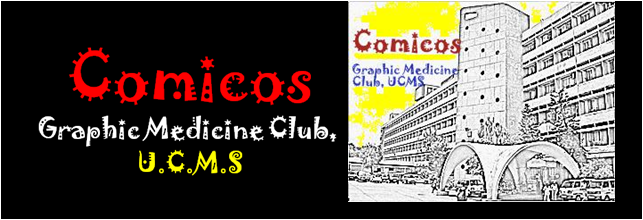Parallel Lines (English) and Samanantar Rekhayein (Hindi) are the second in the series of Devcom (development comics) published by World Comics India. It has a foreword by Polyp, a British cartoonist based in Manchester.
These comics start describing development from where the earlier ones left and take it a level further, not just in terms of description but visual aesthetics and storytelling techniques as well. All stories have a different art as well as narration style owing to the different backgrounds of the artists. It is to be noted that most of them are not trained artists and have learnt the art over a period of time working with World Comics and their local organizations.
The stories this time are longer (14-16 pages) contributed by Sunder Mohan Murmu, Rajeswari Saha, Siddharth Sarathi, Amrith Basumatari and Lakhindra Nayak. The comic took an year in the making and throughout that period the creators had extensive discussions and workshops on the art of making comics, visualization, frame composition, inking, texturing etc. They also had prolonged discussions on their stories where each had to defend their story from the critical view of the rest as well as accept suggestions.
These comics start describing development from where the earlier ones left and take it a level further, not just in terms of description but visual aesthetics and storytelling techniques as well. All stories have a different art as well as narration style owing to the different backgrounds of the artists. It is to be noted that most of them are not trained artists and have learnt the art over a period of time working with World Comics and their local organizations.
The stories this time are longer (14-16 pages) contributed by Sunder Mohan Murmu, Rajeswari Saha, Siddharth Sarathi, Amrith Basumatari and Lakhindra Nayak. The comic took an year in the making and throughout that period the creators had extensive discussions and workshops on the art of making comics, visualization, frame composition, inking, texturing etc. They also had prolonged discussions on their stories where each had to defend their story from the critical view of the rest as well as accept suggestions.

















